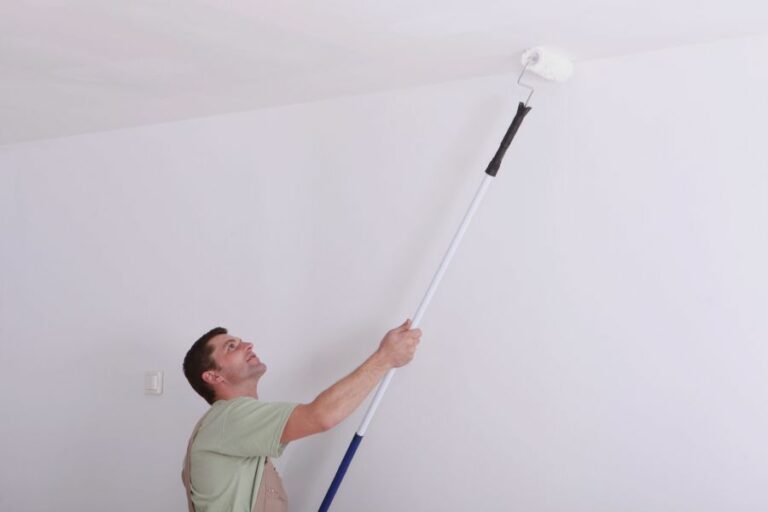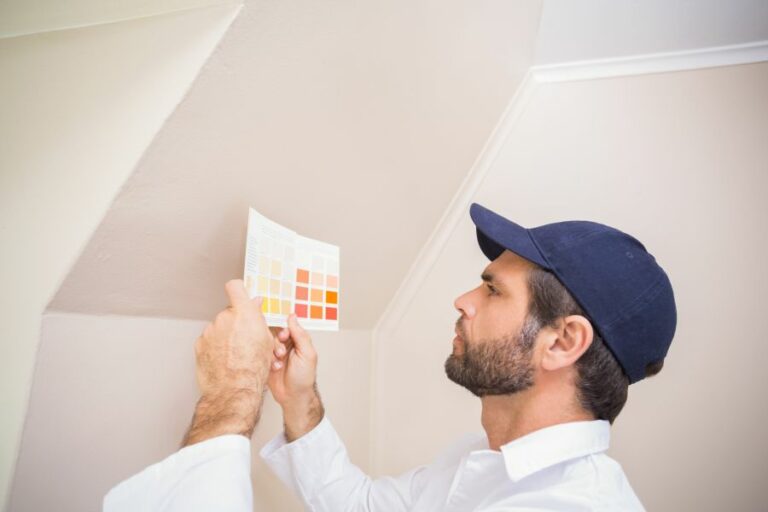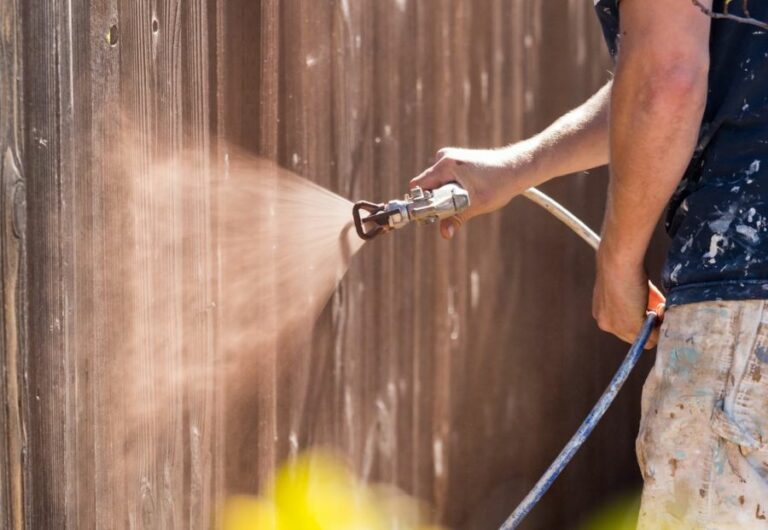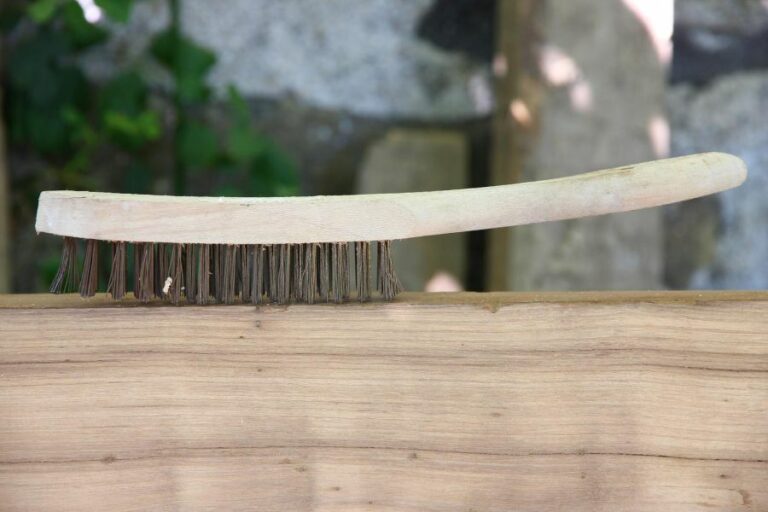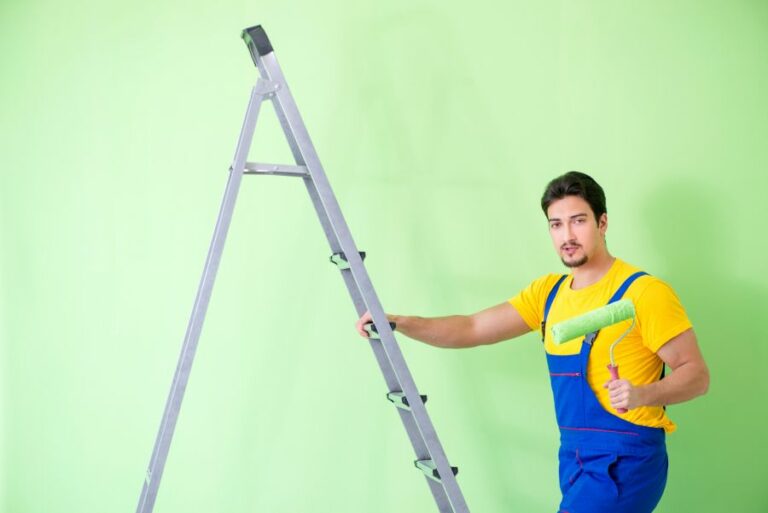Repair Uneven Surfaces And Cracks, 25 Things You Should Know
Tackling uneven surfaces and cracks around your home or office can seem like a daunting task, but with the right guidance and tools, it’s easier than you might think. From pesky hairline cracks in your walls to uneven flooring and surfaces, we’ve got the tips and tricks you need to achieve professional-quality repairs.
Repair uneven surfaces and cracks:
To repair uneven surfaces and cracks, first, identify the root cause and assess the damage. For small hairline cracks, use a patching compound or concrete crack filler. For large cracks, chisel open the crack, clean it, apply adhesive, and fill it with a repair mix. For uneven surfaces, use a self-leveling compound for minor cases or concrete grinding for severe ones. Some repairs may require professional assistance.

Tired of unsightly, uneven surfaces and annoying cracks? We’ve got you covered. Read on to discover expert tips and techniques for repairing and restoring those imperfect areas, ensuring a flawless finish. You won’t want to miss this!
Contents
- 1 Fixing Uneven Surfaces and Crack Issues
- 2 Solutions for Cracked and Uneven Concrete Repair
- 3 Methods to Rectify Uneven Concrete Surfaces
- 4 Addressing Cracked and Uneven Driveway Problems
- 5 Is Leveling Possible for Cracked Concrete?
Fixing Uneven Surfaces and Crack Issues
• Identifying the Problem
Before beginning the process of repairing uneven surfaces and cracks, it is crucial to first identify the root cause of the issue.
This involves visually examining the affected areas and determining the severity of the problem. In some cases, the issue may be cosmetic and can be addressed through simple DIY techniques such as patching or filling.
In other instances, the problem may be structural, indicating that more intensive repairs are required.
It’s important to remember that while cosmetic repairs can improve the appearance of your property, they are not a long-lasting solution. For more information on how to assess whether your issue is cosmetic or structural, visit this guide provided by the University of Minnesota.
• Preparing the Surface
– Cleaning
Prior to repairing the surface, it is essential to thoroughly clean the area to ensure that dirt, dust, and debris do not interfere with the repair process. This includes:
- Sweeping or vacuuming the entire surface to remove loose materials
- Scrubbing the affected areas with a wire brush to eliminate any remaining debris
- If necessary, use a pressure washer to remove stubborn stains or dirt
Once the surface is clean and dry, it is ready for repairs.
– Assessing for Damage
Inspect the surface closely to identify the specific types of cracks and uneven surfaces that require repairs. Common issues include:
- Hairline cracks: These small, shallow cracks are often cosmetic and can be easily repaired using a patching compound.
- Large cracks: Larger, deeper cracks may require additional steps, such as reinforcing the affected area, using a stronger repair material, or even replacing the entire section.
- Uneven surfaces: Uneven surfaces can cause additional problems, such as water pooling and damage to furniture or vehicles. They may require leveling or additional material to correct the issue.
• Repairing Cracks
– Small Hairline Cracks
For small hairline cracks, the following steps may be taken:
- Apply a patching compound or concrete crack filler, following the manufacturer’s instructions.
- Using a putty knife or trowel, gently press the compound into the crack, ensuring that it fills the entire space.
- Smooth the surface to blend the repair with the surrounding area.
- Allow the compound to cure as per the manufacturer’s recommended time before resuming use of the area.
– Large Cracks
For larger cracks, it is important to take a more comprehensive approach to repair. This may involve:
- Using a chisel and hammer to open up the crack, forming a V-shape to allow for better adhesion of the repair material.
- Cleaning the crack thoroughly, including the use of a shop vacuum to remove any debris from within the crack.
- Applying a concrete bonding adhesive to the inside of the crack to help the repair material adhere properly.
- Using a concrete repair mix, following the manufacturer’s instructions, fill the crack with the repair material, ensuring that it is well-compacted and free from voids or air pockets.
- Smooth the surface, allowing it to cure as per the manufacturer’s recommended time before resuming use of the area.
• Repairing Uneven Surfaces
For uneven surfaces, the following steps may be taken:
– Self-Leveling Compound
- Using a self-leveling compound, follow the manufacturer’s instructions to mix and apply the material.
- Pour the compound onto the uneven surface, starting at the lowest point and working your way outwards.
- Use a trowel or other suitable tool to evenly distribute the leveling compound across the surface.
- Allow the compound to cure according to the manufacturer’s instructions before resuming use of the area.
– Concrete Grinding
- For more severe cases, concrete grinding may be necessary. Rent a concrete grinder from a reputable equipment rental company.
- Begin at the highest point of the uneven surface, grinding away the excess concrete until the area is level with the surrounding surface.
- Continue the process, progressing across the uneven surface until the entire area is level.
- Once the entire surface has been ground, finish by applying a concrete sealer or other appropriate sealants to protect your newly leveled surface.
• Final Thoughts
Repairing uneven surfaces and cracks is an essential part of property maintenance, ensuring that your surfaces not only look good but also remain functional and safe.
While some repairs can be easily performed by a DIY enthusiast, more complex repairs may require professional assistance. In cases of severe uneven surfaces or large cracks, it is vital to properly assess the root cause of the issue and seek expert advice if necessary.
By following this comprehensive guide, you should now have a greater understanding of how to effectively identify, assess, and repair uneven surfaces and cracks, providing valuable knowledge to help you maintain your property.
Solutions for Cracked and Uneven Concrete Repair
Cracked and uneven concrete surfaces are not only visually unappealing but can also pose safety hazards for those walking on them.
Although concrete is a durable construction material, various factors can cause it to deteriorate and become damaged over time. Fortunately, repairing cracked and uneven concrete is possible and can be done with the right knowledge, tools, and techniques.
• Factors that Contribute to Concrete Damage
There are several factors that can cause concrete surfaces to crack or become uneven:
- Weather conditions, such as freeze-thaw cycles or exposure to harsh chemicals
- Soil movement or settling beneath the concrete
- Poor construction practices, such as improper curing, inadequate subgrade preparation, or insufficient reinforcement
- Excessive load capacity, leading to stress cracks or other types of structural failure
Understanding the cause of concrete damage can help in selecting the best repair method.
• Repair Methods for Cracked and Uneven Concrete
– Crack Repair
There are several methods available for repairing cracks in concrete, depending on the size and severity of the crack. Some of these methods include:
Epoxy Injection
The American Concrete Institute (ACI) recommends epoxy injection as an effective technique for repairing cracks in concrete.
Epoxy injection involves the use of specially-formulated epoxy resins that are injected into the crack. The epoxy fills the crack, binds the concrete together, and seals it from moisture and other contaminants.
Routing and Sealing
This method involves enlarging the crack by cutting a groove along its length and then filling it with a flexible sealant. The sealant helps to keep water and other contaminants out of the crack, preventing further damage.
Stitching
Stitching is a method used for larger structural cracks. It involves drilling holes along the crack and using U-shaped metal staples or anchors to hold the cracked sections together. The anchors are then grouted into place, providing additional support and stability to the cracked area.
– Repairing Uneven Concrete
For uneven concrete surfaces, the following methods may be employed:
Grinding
Grinding is a method used to level smaller, high spots in the concrete. A grinding machine removes the high spots by cutting away the top layers of the concrete, effectively leveling the surface. This method is particularly useful for minor imperfections in concrete floors or sidewalks.
Slabjacking
Slabjacking is a technique used to lift and level a concrete slab that has settled or sunk. Holes are drilled into the slab, and a special material (usually a mixture of cement, sand, and water) is injected beneath the slab to raise it to its original height.
Slabjacking is often recommended for larger, sunken areas like driveways, walkways, or patios.
Concrete Resurfacing
For severely damaged or uneven surfaces, concrete resurfacing may be the best option. This involves removing the damaged concrete and replacing it with a new layer of concrete. Resurfacing can give an old, worn-out concrete surface a renewed appearance and improved functionality.
• Choosing the Right Repair Method
To choose the best repair method, it is important to assess the extent of the damage and the underlying cause. For minor cracks or uneven areas, simple patching or resurfacing may suffice. For larger or more structurally significant damage, more extensive repairs like slab jacking or stitching may be necessary.
In some cases, it may be more cost-effective to completely replace the damaged concrete, particularly if it is old or has a history of recurring issues. Consult with a professional concrete contractor for guidance in making the best decision for your unique situation.
• Conclusion
While cracked and uneven concrete may seem like a daunting issue to tackle, various repair methods are available to restore its appearance and functionality.
By understanding the causes of concrete damage and the techniques used to repair it, homeowners and contractors can effectively address these problems and prolong the life of their concrete surfaces.
| Can you repair cracked and uneven concrete? | |
|---|---|
| Cracked Concrete | Yes, it can be repaired using methods such as epoxy injection or by filling the cracks with mortar or concrete. |
| Uneven Concrete | Yes, it can be leveled and repaired using concrete leveling techniques such as mud jacking, polyurethane foam injection, or grinding and resurfacing. |
Methods to Rectify Uneven Concrete Surfaces
• Identifying the Problem
Uneven concrete surfaces can pose a significant safety hazard and diminish the aesthetic appeal of your property.
These problems often arise due to inadequate surface preparation, improper pouring techniques, and natural shifting of the ground over time. It is crucial to address these issues promptly and professionally to prevent further damage and maintain the functionality of the space.
Before undertaking any repair procedures, you must first assess the severity of the damage to determine the most appropriate course of action.
• Concrete Grinding
If you have a slightly uneven surface, concrete grinding can be an effective method to level it out. This process involves removing the top layer of the concrete using an abrasive grinding wheel or disc.
Grinding can be done using handheld tools for small areas or walk-behind floor grinders for larger surfaces. Concrete grinding can also improve the overall appearance of your concrete surface by removing stains and dirt.
When choosing to grind the concrete, it is essential to use the appropriate type of grinding wheel or disc based on the specific requirements of your surface.
A segmented or turbo cup wheel is ideal for removing coatings and grinding down rough concrete, while a diamond cup wheel can provide a smoother finish.
One of the key benefits of concrete grinding is that it can be a relatively quick process with minimal downtime involved. It is important to ensure that your grinding equipment is in good working order and that you wear the necessary safety gear, such as gloves, goggles, and a dust mask.
• Self-Leveling Concrete
For more significant uneven surfaces, you may consider using a self-leveling compound. This is a specially formulated liquid concrete that, when poured onto the surface, will level itself out and fill any depressions or low spots.
Self-leveling concrete offers a quick and efficient solution for leveling out an uneven surface, particularly for interior floors.
Before applying a self-leveling compound, it is essential to thoroughly clean the existing concrete surface to ensure proper adhesion. Remove any dirt, debris, oil, or grease that may be present on the surface.
When using self-leveling concrete, follow the manufacturer’s instructions closely, as these products often have specific guidelines regarding temperature and mixing procedures.
Once the self-leveling concrete has been properly mixed, pour it evenly over the surface, allowing it to self-level and fill any low spots. After the self-leveling concrete has cured, you can apply a suitable flooring material over the newly leveled surface.
It is important to note that self-leveling concrete is not suitable for exterior applications, as it does not have the structural integrity to withstand harsh weather conditions and may crack or break down over time.
• Concrete Slab Jacking
In cases where a concrete slab has sunk due to soil-related issues such as settlement or erosion, slab jacking may be the most appropriate solution. This technique involves injecting a polyurethane foam or a cement-based slurry beneath the slab to raise it back to its original level.
Slab jacking is a relatively non-invasive process, requiring only small holes to be drilled into the concrete surface to inject the material. The injected material will then expand and harden, raising the slab to its original level.
This method is effective for both interior and exterior applications and can be a more cost-effective and less disruptive alternative to replacing an entire concrete slab. However, it is crucial to consult with a professional contractor to determine if slab jacking is the best option for your specific situation.
• Concrete Resurfacing
If your uneven concrete surface has extensive damage, such as cracking or pitting, concrete resurfacing may be required. This process involves applying a thin layer of specially formulated concrete or polymer-modified overlay to the existing surface to create a new, uniform surface.
Resurfacing can improve both the appearance and functionality of your concrete surface, as well as extend its overall lifespan.
Before resurfacing, it is crucial to repair any significant cracks or damage to the existing surface. This may involve filling cracks with a concrete repair compound or, in more severe cases, replacing damaged sections of the slab.
Prior to applying the resurfacing material, the existing concrete surface must be cleaned thoroughly to ensure proper adhesion. This may involve power washing, acid etching, or grinding, depending on the condition of your surface.
When applying the resurfacing material, follow the manufacturer’s instructions closely, and be sure to work quickly, as these products often have a short working time before they begin to set. ]
• Final Thoughts
In conclusion, fixing uneven concrete surfaces requires careful assessment of the issue and selecting the appropriate repair method based on the severity of the damage.
Concrete grinding, self-leveling compounds, slab jacking, and concrete resurfacing can all be effective solutions, depending on your specific situation. Consultation with a professional contractor is highly recommended to ensure the best possible results for your concrete surface.
Method | Description |
|---|---|
Grinding | Use a concrete grinder to mechanically remove high spots and create a smooth, even surface. This method is suitable for small and localized unevenness. |
Slabjacking | Involves pumping a cementitious mixture beneath the slab to raise and level it. This method is appropriate for larger areas or when the underlying soil has settled. |
Self-Leveling Concrete | This consists of using a self-leveling compound that is poured over the uneven surface, filling in low spots and creating a new, level surface. Best for smaller areas or indoor spaces. |
Concrete Resurfacing | Apply a thin layer of resurfacing material over the entire surface to create a smoother and more even appearance. This is a good option for cosmetic corrections or when the surface is mostly level but has slight imperfections. |
Concrete Replacement | In cases of severe damage or extreme unevenness, it may be necessary to remove and replace the entire concrete surface. This is the most invasive and costly option, but it can provide a new and structurally sound surface. |
Addressing Cracked and Uneven Driveway Problems
A cracked, uneven driveway can affect your home’s curb appeal and create potential safety hazards. However, knowing how to address these issues can save you time, money, and frustration.
• Assessing the Damage
Before you can fix your driveway, you must identify the extent of the damage. Generally, driveway issues can be classified into three categories:
– Hairline Cracks
These are small, superficial cracks that form due to normal wear and tear or exposure to extreme temperature fluctuations. Although hairline cracks do not usually need immediate action, they should still be monitored as they can worsen over time.
– Large Cracks
These cracks are generally wider than a quarter-inch and may be deep, penetrating the surface’s entire thickness. Large cracks can result from a variety of factors, such as heavy vehicle traffic, tree roots, or water damage. These cracks can pose safety hazards and require prompt attention.
– Uneven Surfaces and Settling
This type of damage is characterized by the driveway’s unevenness, causing water to pool in certain areas or creating trip hazards. Uneven surfaces and settling often occur due to soil erosion or improper installation. These issues should be addressed to avoid further damage and enhance safety.
• Choosing the Right Repair Method
Once you have determined the type and extent of your driveway’s damage, you can choose the proper repair method. The following sections discuss common repair techniques for cracked, uneven driveways.
– Patching Hairline Cracks
To fix hairline cracks, you can use a concrete crack filler or sealant. These materials are available at most hardware stores and can be easily applied by following the product’s instructions. Regularly sealing your driveway can help prevent hairline cracks from forming and extend the life of your driveway.
I recommend using a flexible sealant, such as QUIKRETE Concrete Crack Seal, which is designed to adhere to the driveway’s surface while still allowing for expansion and contraction during temperature fluctuations.
– Repairing Large Cracks
For large cracks, you may need to use a more robust solution, such as patching or resurfacing. Patching involves removing the damaged area, filling it with a high-quality patching compound, then tamping down the repair area to ensure proper adhesion.
Resurfacing involves applying a new layer of material to the driveway’s surface, giving it a fresh appearance and added durability.
The Federal Highway Administration (FHWA) provides an excellent guide for selecting the best repair method for different crack types and driveway materials. Please consult their Distress Identification Manual for more information.
– Leveling Uneven Surfaces and Settling
To fix uneven surfaces and settling issues, you may need to hire a professional. Professional driveway repair services can use specialized equipment and techniques, such as slabjacking or mudjacking, to lift and stabilize your driveway.
This process involves injecting a mixture of cement, sand, and water beneath the affected areas, raising and leveling the driveway in a controlled manner.
• Implementing Preventive Measures
Once your damaged driveway has been repaired, make sure to implement preventive measures to minimize future issues. Some effective strategies include:
– Regular Maintenance
Inspect your driveway regularly and promptly address any small cracks or signs of deterioration. Seal your driveway every few years to protect it from water infiltration, extreme temperatures, and other external factors.
– Proper Drainage
Ensure that your driveway’s water drainage system functions correctly. If your driveway slopes towards your home or has inadequate drainage, water can infiltrate the base material, causing erosion and sinking over time. Consult with a professional to design and install an effective drainage system.
– Avoid Heavy Loads
When possible, avoid parking heavy vehicles or placing heavy objects on your driveway, as this can cause excessive stress on the surface and lead to cracks or settling.
– Tree Root Management
Create a proper vegetation buffer zone between your driveway and any nearby trees or shrubs. This can help minimize root intrusion and prevent cracks or other driveway damage.
• Closing Thoughts
Taking care of your cracked, uneven driveway is essential for maintaining your home’s beauty and safety. By assessing the damage, choosing the appropriate repair method, and implementing preventive measures, you can enjoy a durable and attractive driveway for years to come.
Always consult a professional if you are unsure of the best course of action, as they can provide expert guidance tailored to your situation.
Is Leveling Possible for Cracked Concrete?
Cracked concrete is a common issue that many property owners face. Not only is it unattractive, but it also poses significant safety hazards and can lead to further structural damage. The good news is that cracked concrete can be leveled to not only improve its aesthetics but also restore its functionality.
• Methods of Concrete Leveling
There are several methods available for leveling cracked concrete. Each method has its advantages and disadvantages, and the choice will depend on various factors, such as the extent of the crack, the underlying cause, and the desired outcome.
– Mudjacking
Mudjacking, also known as slab jacking or concrete raising, is a popular method for leveling cracked concrete. This method utilizes a slurry mixture of water, soil, and cement, which is pumped under the uneven concrete slab.
The slurry fills the voids and lifts the slab back to its original position as it hardens. Mudjacking is typically less expensive than other methods and has a short curing time.
– Polyurethane Injection
Polyurethane injection, also known as foam lifting or foam jacking, involves injecting a high-density polyurethane foam beneath the cracked concrete. As the foam expands, it fills the voids under the slab, lifting it back to its original position.
This method is faster than mudjacking and provides a more stable and long-lasting solution. However, it can be more expensive than other methods.
– Grinding and Patching
Grinding is a method where high spots on the concrete surface are removed using specialized equipment. This method may be used on minor cracks and unevenness. Patching, on the other hand, involves applying a fresh layer of concrete to fill the cracks and level the surface.
These techniques are typically used together to restore the appearance and functionality of the cracked concrete.
– Full Replacement
When the cracks are extensive, or the damage is too severe, a full replacement of the cracked concrete may be necessary. This involves the removal of the existing slab, preparation of the substrate, and pouring of a new concrete slab.
Although this method is more expensive and time-consuming, it may be the most effective solution for severely damaged concrete.
• Factors to Consider Before Leveling Cracked Concrete
Before attempting to level cracked concrete, there are several factors to consider to ensure a successful outcome:
- Evaluate the cause of the crack: Cracks may be caused by several factors, such as settlement, water damage, or improper construction. Understanding the underlying cause will help determine the most appropriate leveling method and prevent future issues.
- Determine the extent of the damage: The severity of the crack and the surrounding damage will impact the level of effort required for leveling. It will also help determine whether a short-term repair or a long-term solution is needed.
- Evaluate the costs: The costs associated with leveling cracked concrete will vary depending on the method chosen, the extent of the damage, and the required materials. It’s essential to weigh the financial impact against the potential benefits of leveling the cracked concrete.
- Consult an expert: If you are unsure which method to choose or how to proceed, it is best to consult a professional with experience in concrete leveling. They can provide valuable guidance and ensure the chosen method is implemented correctly.
• Recommendations for Successful Concrete Leveling
From personal experience, I recommend the following tips to ensure successful concrete leveling:
- Address underlying issues: Before leveling the cracked concrete, ensure that any underlying problems causing the cracks are addressed. This may involve water drainage improvements, soil stabilization, or reinforcement of the concrete foundation.
- Choose the appropriate leveling method: As discussed earlier, select the most suitable leveling method for the specific situation. Consult a professional if necessary to help make the decision.
- Hire an experienced contractor: Concrete leveling requires specialized skills and equipment, so it’s essential to hire a competent contractor with experience in the chosen method. Check their track record, references, and licensing to ensure they can deliver a high-quality result.
- Monitor the repair: After the leveling is complete, regular inspections should be conducted to ensure the crack doesn’t reappear or worsen. This can help identify potential issues early and prevent further damage.
• Conclusion
Cracked concrete can indeed be leveled using various methods such as mud jacking, polyurethane injection, grinding, patching, or full replacement.
When deciding on the most suitable method, it’s essential to consider factors such as the cause of the crack, the extent of the damage, and the desired outcome.
By addressing underlying issues, choosing the right method, and hiring an experienced contractor, cracked concrete can be successfully leveled, improving both aesthetics and functionality.
For further information on concrete leveling, visit the Portland Cement Association website, which offers valuable resources and articles on concrete repair and maintenance.


